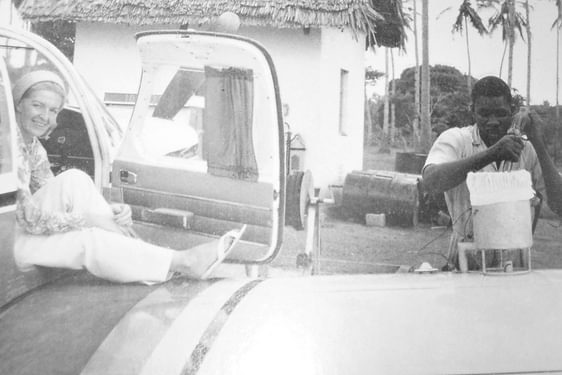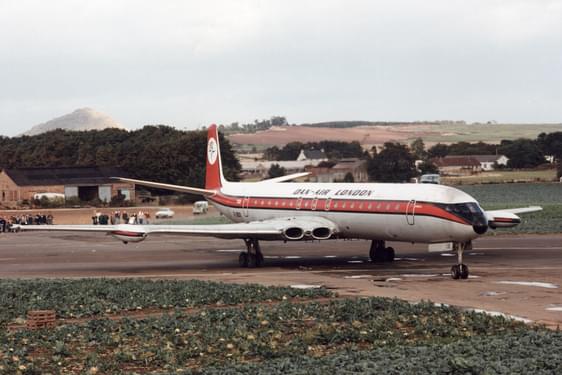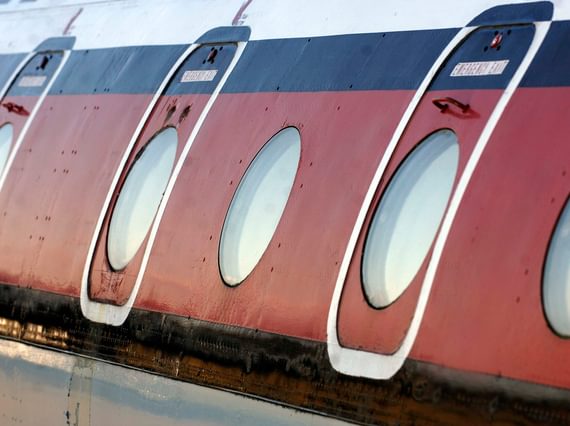
Five aircraft that pioneered commercial aviation
News Story
Many have become accustomed to air travel, with the low-cost of airline tickets allowing regular flights to Europe and beyond.
It is hard to believe that international air travel began little over a century ago.
The first regular international passenger flight was on 25 August 1919. Passengers flew from Hounslow Heath in London to Le Bourget in Paris. The flight was operated by Air Transport and Travel, a company that would become part of British Airways.
Below we've highlighted key aircraft that pioneered commercial aviation in Scotland and the UK during the 20th century.
1. de Havilland Dragon
Passenger routes in Scotland began to open up in the 1930s. Pilots would seek out landing grounds to operate passenger services to remote areas. These areas included the Highlands, Orkney, Shetland, and the Western Isles. This allowed people to reach the Scottish mainland much quicker than they could by ferry.
Pioneering pilots of this time helped to set up Scotland-specific airways. Captain Edward 'Ted' Fresson set up Highland Airways and Eric Gandar Dower set up Aberdeen Airways. Both Fresson and Gandar Dower operated these services using the de Havilland Dragon. This aircraft could carry six passengers per journey.
Highland Airways started the Inverness to Kirkwall route in May 1933. This route allowed Orcadians to travel to and from home, many travelling for business. The Second World War put a pause to this commercial travel. From 1939 to 1945 the route was used to transport military personnel to Scapa Flow. The passenger windows were blanked out for security reasons.
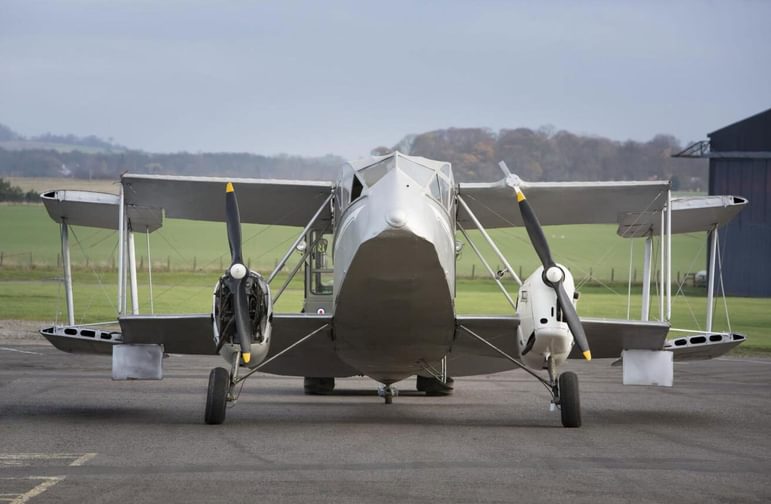
The de Havilland Dragon on the airfield at the National Museum of Flight. Museum reference: T.1981.63
2. de Havilland Dove
After the end of the Second World War commercial aviation grew at speed. Many airlines used converted bombers as passenger transports. There were also many new aircraft designs built.
One of the most successful aircraft in the post-war period was the de Havilland Dove. More than 500 Doves were built and sold widely around the world. Doves were flown by British airlines such as BOAC (British Overseas Airways Corporation) and Dan-Air.
The Dove at the National Museum of Flight was able to transport up to eight passengers at a time.
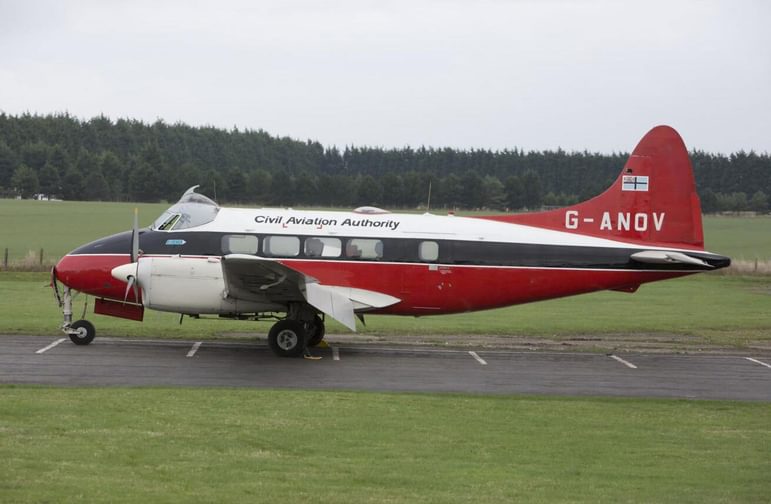
The de Havilland Dove aircraft on the airfield at the National Museum of Flight. Museum reference: T.1978.33
3. de Havilland Comet
The biggest development in commercial aviation was the introduction of turbojet engine airliners. The world's first passenger jet service launched on 2 May 1952 from London to Johannesburg. This was flown by the de Havilland Comet, the world's first jet airliner.
It was an exciting time, with the prospect of fast, smooth, and quiet travel to anywhere in the world. Yet, being first in any field of technology often brings its own problems and that was the case with the Comet. Cracks caused by metal fatigue resulted in a series of crashes. The pressurisation and de-pressurisation as aircraft took off and landed led to stress fractures in the airframe. These fractures spread, causing the airframe to fail and disintegrate in the air.
The problems were eventually solved. An improved version of the Comet, the Comet 4, entered service in 1958. On 4 October 1958, a BOAC Comet 4 became the first jet aircraft to launch transatlantic services. This preceded Pan American by three weeks. However, de Havilland's competitors had learnt from the Comet's mistakes. The Boeing 707 was larger, faster, and had a longer range, all of which made it more cost effective.

Comet G-BDIX making its last ever landing on the runway at the National Museum of Flight in September 1981. Museum reference: T.1981.90
4. Concorde
By this time, research into the concept of a supersonic transport aircraft had begun. Both France and Britain realised that neither had the resources to develop such an aircraft alone. Thus they agreed to work together to develop a supersonic airline. This would eventually become Concorde.
The French prototype first flew in 1969. This was closely followed by the British prototype a few weeks later. British Airways and Air France Concordes entered service simultaneously on 21 January 1976. Supersonic services continued to operate until Concorde was withdrawn from service in 2003.
Concorde G-BOAA at the National Museum of Flight flew the inaugural British Airways service on 21 January 1976 from London to Bahrain.
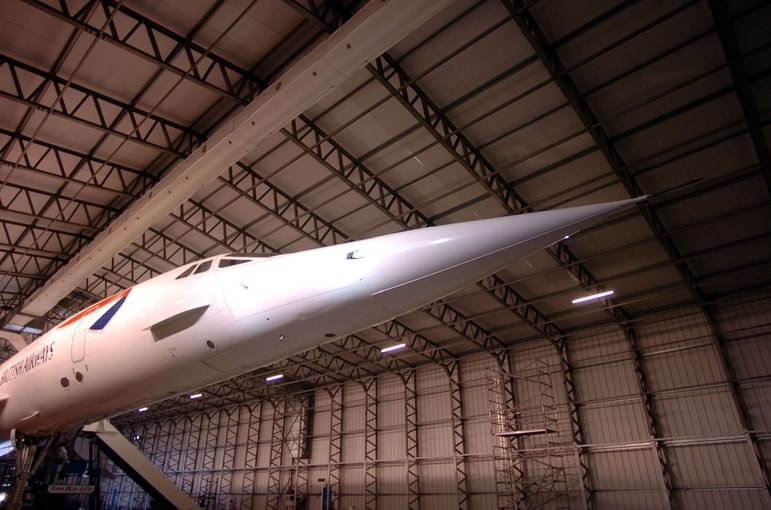
Concorde at the National Museum of Flight. Museum reference: IL.2004.7.1
5. Twin Pioneer
During developments in passenger airliners, Scottish Aviation began to develop its own aircraft in Ayrshire. These were the Pioneer and Twin Pioneer, or ‘Twin Pin’.
The Twin Pin was planned as a twin-engined version of the Pioneer, but was in fact a much-enlarged aircraft. It was intended to carry up to 16 passengers in areas where geographical or economic factors did not justify the construction of large airfields. Although the Twin Pioneer would serve the military in a similar role to that of the Pioneer, it was also used for commercial passenger services. Operators of the Twin Pin included Austrian Airlines, Borneo Airways, Kuwait Airways, Royal Nepal Airlines, Philippines Airlines and Swissair.
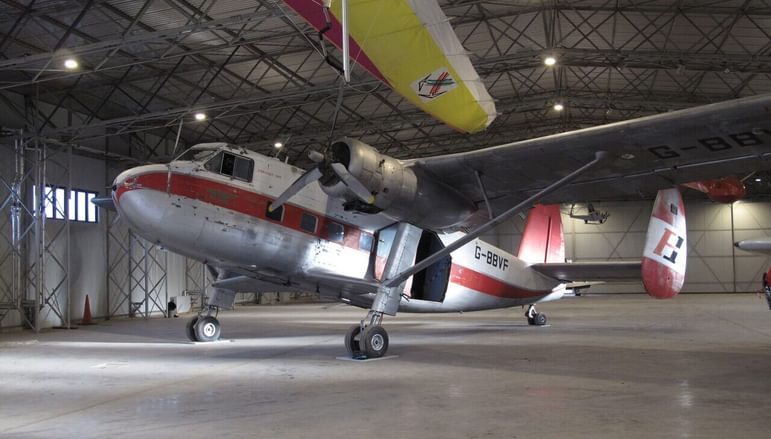
The Twin Pioneer aircraft in the Civil Aviation hangar at the National Museum of Flight. Museum reference: T.1982.137
Although it seemed that the Twin Pioneer would be a huge success, in the end only 89 aircraft were constructed. Partly this was due to the nature of the niche market at which it was aimed. The countries without airport infrastructures that the Twin Pin was aimed at were the ones least able to afford to purchase the aircraft. There was also an excess of available cheap military-surplus Douglas C-47 Dakotas which could do much the same job. However they did not have the same short take-off and landing (STOL) performance.
On top of this there were some notable crashes. One Twin Pin crashed in the Libyan desert on 7 December 1957. The main strut failed due to metal fatigue, which had already been identified as a problem. Unfortunately this was the only aircraft which had not had the problem rectified. This dented customer confidence in the aircraft and many orders were cancelled as a result.
This accident was even more significant in that David McIntyre was killed in the crash. He had co-founded Scottish Aviation with the Duke of Hamilton in 1935. Macintyre had been a major driving force behind the Twin Pioneer programme, and was in Libya on a sales drive at the time of the crash.
The Twin Pin at the National Museum of Flight is one of only two such aircraft on display in the UK. Other examples can be seen in Australia and Malaysia. Our example, G-BBVF, was flown by the RAF and then used for aerial photography work.
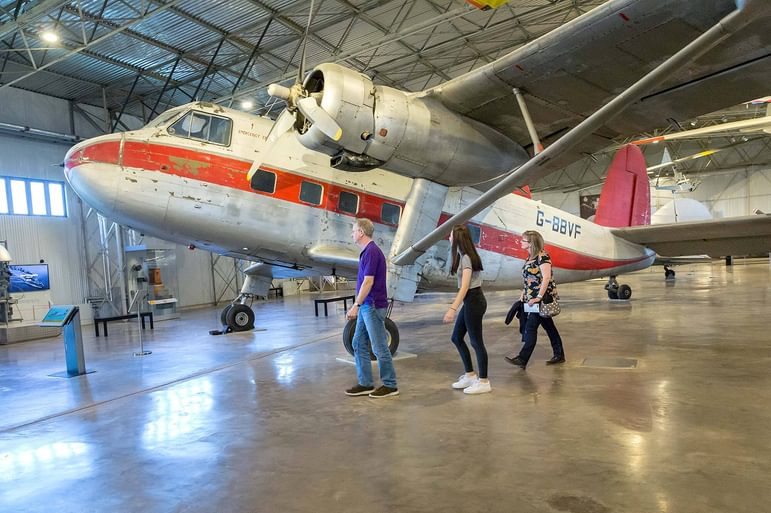
Visitors viewing the Twin Pioneer in the Civil Aviation Hangar at the National Museum of Flight.
Air travel today
Air travel has become more affordable and accessible over the past century. Large wide-body jets can carry hundreds of passengers at a time. Passengers can travel for holidays, business, or to see loved ones in far distant places. It is important to remember the role aviation plays in our lives and the part that Scotland, and Scottish Aviation, has had in it.
The five aircraft are on display at the National Museum of Flight.
